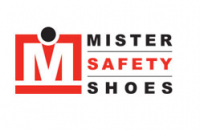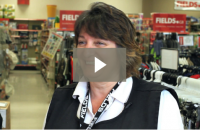From One Store to Forty-Four: Interview with Vivah Jewellery
 The history of Vivah Jewellery stretches back to its beginning in 1972 as a trading company that sold a variety of art and fashion accessories selected and brought over to North America from India. As the company grew, owner Zell Goodbaum realized that jewellery was making up the majority of their sales, and adjusted his long-term strategy to take advantage of that clear demand.
The history of Vivah Jewellery stretches back to its beginning in 1972 as a trading company that sold a variety of art and fashion accessories selected and brought over to North America from India. As the company grew, owner Zell Goodbaum realized that jewellery was making up the majority of their sales, and adjusted his long-term strategy to take advantage of that clear demand.
In 1984 he partnered with self-taught silversmith entrepreneur Vivah Goldberg. Together they launched their shared vision of a retail jewellery chain. From the opening of the first location in 1985 they knew they had something special, and by continuing to respond swiftly and flexibly to their changing market, they grew their operations over thirty years to encompass a (current!) total of 44 locations.
We sat down to speak with Zenny Badree of Vivah Jewellery, to learn more about the challenges and successes involved in their expansion over the last three decades.
Growing from one location to 44 isn’t a small task – what were some of the pain points you started experiencing as part of that growth that hadn’t been a problem when you were a smaller operation?
When you have a small amount of stores, it’s easy to just do everything manually. Over time, though, manual processes become less and less efficient – not to mention the technology available to you is getting better and better. When you think about the way a retailer’s strategy has to evolve, there are internal forces for change (like expansion) but also external ones. An obvious example is the internet. Getting the internet at the stores changed everything – before that they were depending heavily on their phone lines to forge the connection between head office and their retail stores.
When we were using phones as our primary method of communication, that meant we used it for sales tracking information. Every night stores used to call in to an extension box to report cash and sales, then in the morning someone at head office had to sit and listen to each message from each store in order to retrieve that information, after which they then had to check it against the morning’s polling data and bank deposit information. You can imagine how costly this was in terms of the stores’ time and head office’s time, considering it had to be done every single day. We used the same system for collecting information on payroll and special orders. This information is used in sales tracking, sales targets, and theft prevention, so it’s absolutely critical to our business operations.
Again, this is a perfectly workable system when you only have two or three locations. There’s no need for a super sophisticated solution at that stage – but we didn’t stay at that stage, so something better had to be implemented.
What was important to you when you started looking at ways to deal with that pain point?
One of our earliest investments in a big technology solution had been to get an inventory management system, so when we realized we could take the core of Magstar’s inventory system and integrate it with front-end operations, that was definitely something we decided we wanted.
First and foremost, we wanted to make life easier for all of our stores and for head office. With all our locations set up with internet connections, we created three forms, accessed through the store’s Magstar POS system, enabling that essential information to travel directly into the computers at head office. Our managers could then report the cash and sales, employee hours and special orders all through a simple, easy interface that fed the information through to us. It was an instant way to save us between six and ten hours a week, and that was the ultimate goal: time- and money-saving efficiency.
Were there any other goals you hoped to achieve or essential components you needed as part of this technology upgrade?
For a jewellery retailer, where a single product less than an inch square in size can be worth $100+, security is always on our mind. It goes beyond careful tracking of inventory and the quality of our locks – we also place restrictions on the size of discounts employees can offer on certain pieces, and we have safeguards to ensure an item isn’t sold for the incorrect price due to human error.
When we sat down to improve our systems, security was on the top of our minds for everything. The forms for submitting the sales and payroll data, for example, is accessed via the management function through the cash register. Managers can only submit and see reports for their own store location.
Security protocols are set up to prevent employees from giving discounts greater than 75% or processing returns above a certain value. This was actually a setting that was suggested by our technology partner based on their retail experience. Sometimes, however, Vivah will run special sales that provide a discount greater than that limit. In this situation we’re able to set up the special sale such that the 75% limit can be bypassed, but only by the stores and items that the sale applies to – safeguarding against abuse.
It’s not just the software that helps ensure the safety of our products; the hardware was selected for it too. We’re able to upload pictures from our head office inventory into the POS system so that when a cash register rings up a number, employees see the photo of the item, adding another layer of error prevention by allowing them to visually verify that they’ve scanned or punched in the right item number. We’re moving away from the old-fashioned method of manually reading and typing in numbers too – the 2D scanning provided by the POS system has meant we can do aware with squinting at tiny sequences of numbers on tags and hoping the employees both read them and input them correctly.
As you’re growing, have you learned any valuable lessons that you would share with other retailers planning on expanding?
Get yourself some good support and always make sure you have flexibility and responsiveness. Trying to grow within a system that is a nuisance to change or upgrade, for whatever reason, is a serious limitation. The way we’re set up, if we have problems with the store computers, we call our Magstar Analyst and he can remotely troubleshoot it and almost always solves it right away. They also keep two computers at their office for us that are loaded up with the Vivah software, so that if a POS ever needs to be completely replaced, all they have to do is send one of the preloaded computers out to the store that needs it. For most of our stores, they can get a computer replaced in a single day.
The Magstar Analyst assigned to our company is my guardian angel. He knows everything, and he’s always available if I need to call for any reason, even for things that aren’t normally in the scope of customer support. If you plan on growing, you need good, flexible technology backed by a support team that is actually, genuinely on your side. Their honesty in terms of recommendations and observations of the way retail technology is evolving is a big part of informing our strategy, and giving us the confidence that if big changes need to happen, we can anticipate and prepare for them, and as small changes are needed, we can evolve to meet those needs.
RECENT POSTS
 The Right Fit for Every Unique Need: Interview with Mister Safety ShoesMister Safety Shoes is an organization with a proud [...]
The Right Fit for Every Unique Need: Interview with Mister Safety ShoesMister Safety Shoes is an organization with a proud [...] FIELDS Canada Has Full Control Over Store Inventory with Total POSWhen they opened a new store, FIELDS Canada wanted [...]
FIELDS Canada Has Full Control Over Store Inventory with Total POSWhen they opened a new store, FIELDS Canada wanted [...] Differentiating With Customer Experience: Interview with Passion VinesVoted Best Liquor Store in South Jersey by the [...]
Differentiating With Customer Experience: Interview with Passion VinesVoted Best Liquor Store in South Jersey by the [...]
